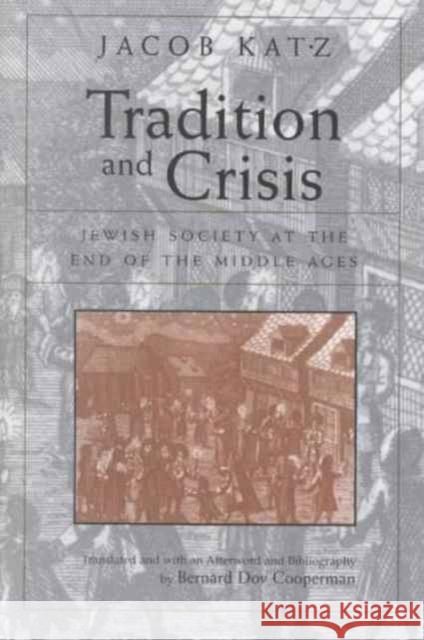Tradition and Crisis: Jewish Society at the End of the Middle Ages » książka
Tradition and Crisis: Jewish Society at the End of the Middle Ages
ISBN-13: 9780814746370 / Angielski / Twarda / 1993 / 410 str.
Tradition and Crisis: Jewish Society at the End of the Middle Ages
ISBN-13: 9780814746370 / Angielski / Twarda / 1993 / 410 str.
(netto: 412,60 VAT: 5%)
Najniższa cena z 30 dni: 366,86
ok. 30 dni roboczych.
Darmowa dostawa!
-An acknowledged classic. Katz has transformed our conception of Jewish history from the 16th to the 18th century. Because of his work, we now understand that the ghetto was no longer sealed off at that time from outside opinions and that the movement towards modernity had begun long before the Jews were actually legally emancipated. Making this work available again in the revised edition is a service to scholarship and to public enlightenment.-
--Arthur Hertzberg -Since it first appeared in Hebrew in 1958, Tradition and Crisis has had a tremendous impact on generations of students and scholars. Katz's innovative use of sources has introduced scholars to new methodologies and opened new vistas for research. This new, unabridged translation is therefore highly welcome. It will ensure its continued use in the English-speaking world.-
--Jehuda Reinharz, Richard Koret Professor of Modern Jewish History, Brandeis University -Like a lovingly restored painting, Bernard Cooperman's new, annotated translation of Jacob Katz's classic portrait of early Jewish modernity can now be fully appreciated for the first time. An admirable achievement.-
--Ivan G. Marcus When it first appeared in Hebrew in 1958 and in English in 1961, Tradition and Crisis, Jacob Katz's groundbreaking study of Jewish society at the end of the Middle Ages, dramatically changed our perceptions of the Jewish community prior to the era of modernity. This new, unabridged translation by Bernard Dov Cooperman makes this classic available to new generations of students and scholars, together with Katz's original source notes, and an afterword and an updating bibliographic appendix by Professor Cooperman. Katz revolutionized the field by tapping into a rich and hitherto unexplored source for reconstructing the sociology of a previous era: the responsa literature of the Rabbinic establishment during the Middle Ages. The self-governing communities of Jews in Europe dealt with issues both civil and religious. The questions and answers addressed to the rabbinic authorities and courts provide an incomparable wealth of insights into life as it was lived in this period and into the social, historical, cultural, and economic issues of the day. How did European Jewry progress from a socially and culturally segregated society to become a component of European society at large? What were Jewish attitudes toward the Gentile world from which Jewry had been secluded for centuries? What were the bridges from the old to the new era? Tradition and Crisis traces the roots of modernity to internal developments within the communities themselves. Katz traces the modern movements of the Haskalah (Enlightenment) in the West and Hasidism in the East, to an internal breakdown in the structure of these communities and the emergence of an alternative leadership in the wake of the Sabbatian challenge.
A dynamic work that has radically changed our view of this history, Tradition and Crisis remains the pivotal text for understanding the revolution in the entire conception of Jewish identity in the modern era.











